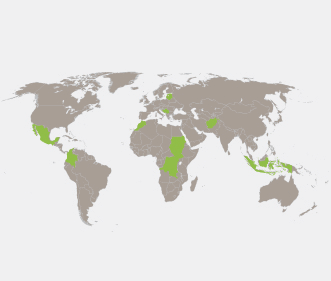As part of our #YearInReview, this article highlights the best and most popular contributions to our new Academic Spotlight series published in 2015. It provides a good overview of key trends in research on security sector reform and security governance published this year in academic journals. Read and Share!
Started in 2015, the Academic Spotlight blog series features recent research findings on security sector reform and security governance published in international relations academic journals. It provides a venue to promote discussion within the academic-policy nexus and develop opportunities to share and exchange on key SSR issues and themes. The blog posts published in this series summarize new research findings and build on recent developments on 2nd generation SSR and doing security & justice differently. They help shape the debates on security sector reform in fragile and conflict-affected countries and are a great way to maximize the impact of academic research and to reach a wider policy community.
- Violent Non-State Actors and Complementary Governance: What ISIS, Hizballah, FARC Have in Common | By Annette Idler & James Forest | June 24th, 2015
In the absence of a strong state, insurgents, traffickers or tribal warlords may provide political and socioeconomic goods through arrangements we characterize as ‘complementary governance.’ When formulating an effective response to this security challenge, policymakers and researchers must account for the complex connections and interactions between multiple non-state governing entities.
- The domestic consequences of SSR: Real-world effects beyond external perspectives | By Ursula C. Schroeder & Fairlie Chappuis | September 15th, 2015
Local ownership has always been central to the theory of security sector reform (SSR) in post-conflict contexts – practically every policy concept in circulation among bilateral donors or multilateral institutions makes local ownership of the reform agenda a sine qua non for external support to SSR. But these calls for local ownership echo hollow against the underwhelming results and unintended consequences of external support to SSR across a growing universe of cases.
- Disarmament, Demobilization and Reintegration: Does ownership actually matter? | By Walt Kilroy | December 4, 2015
The outcomes of programs for disarmament, demobilization and reintegration (DDR) are affected by the way in which they are implemented. More participatory approaches, where ex-combatants feel they have had more say and greater ownership, lead to better results. This is important for how DDR can contribute to the wider peace process and to peacebuilding itself.
- Did PRTs in Afghanistan Decrease Security for Aid Workers? | By David Mitchell | June 18th, 2015
In an effort to curtail the insurgency in Afghanistan, the US military and International Security Assistance Force (ISAF) blended military and humanitarian operations, much to the dismay of many within the nongovernmental organization (NGO) community. One of the major debates surrounding this effort concerns the Provincial Reconstruction Team (PRT) initiative, which several NGOs have faulted for causing “blurred lines” between military and aid activity. PRTs were small units that combined diplomatic, military, and development components in an effort to improve stability in Afghanistan through the enhancement of economic viability, rule of law, and public services. Because of this mixed approach, NGOs such as CARE International, MSF, Save the Children, Oxfam, and others accused the US military and ISAF of increasing risks to aid workers in the field.
- With Elections Looming, will Haiti’s Urban Gangs Re-emerge as Political Actors? | By Geoff Burt | June 26th, 2015
As Haiti enters a lengthy and no doubt turbulent period of electoral politics, the country’s long-standing drivers of conflict take on a particular significance. It has been over three years since Haiti last held elections, but by the end of this year more than 6,000 posts will have been contested in presidential, parliamentary and municipal elections. Gangs have figured prominently in Haiti’s recent political transitions, as national-level political actors have deployed urban gangs to generate violence and unrest as a strategic instrument of political influence. In return for their allegiance, politicians have offered gangs funding and impunity from arrest. The nexus of politics and organized crime made waves in Haitian news after a controversial court ruling led to the release of a high profile criminal with close ties to the Presidential family.
Tags: Academic Spotlight, SSR





 Visit the Centre for
Visit the Centre for